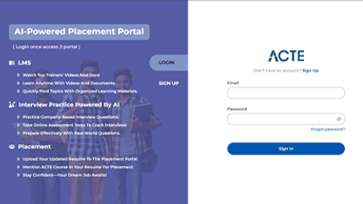A complete introduction to the topic of web design is given to students in the in-depth course offered by ACTE. The course includes important subjects including design thinking, responsive design strategies, UX design concepts, HTML, CSS, and JavaScript. Learners who successfully complete the course will have the knowledge and skills needed to seek successful careers in web design.
Additional Info
The Benefits of Enrolling in a Web Designing Course
Enhancing User Experience:
Web designing is crucial for enhancing user experience on websites. By employing effective design principles, web designers create visually appealing and user-friendly interfaces that engage visitors.
Establishing a Strong Online Presence:
In order to build a solid online presence for individuals, companies, and organizations, web design is essential. It helps convey their unique brand identity, personality, and values through visual elements, such as color schemes, typography, and imagery.
Improving Search Engine Visibility:
By employing SEO-friendly design practices, such as proper heading structures, optimized images, and clean code, web designers contribute to the website's search engine optimization efforts.
Increasing Website Conversion Rates:
A well-designed website focuses on creating persuasive and compelling elements to encourage user actions, such as making a purchase, subscribing to a newsletter, or submitting a form.
Latest Frameworks for Web Designing Courses
-
React.js:
React.js is a popular JavaScript library for creating user interfaces because of its component-based design and virtual DOM rendering. For building interactive and dynamic online applications, it is frequently employed.
-
Angular.js:
It is a TypeScript-based framework for creating scalable and reliable online apps. It was created and is maintained by Google.
-
Vue.js:
Modern JavaScript framework that emphasizes simplicity and usability. Since it enables developers to gradually incorporate its capabilities, it may be used for both small-scale applications and large-scale projects.
-
Bootstrap: A front-end framework that offers a selection of pre-made CSS and JavaScript components. By providing easily customizable responsive grids, typography, forms, buttons, and other UI elements, it simplifies site design.
-
Tailwind CSS:
A low-level approach to creating user interfaces is provided by this utility-first CSS framework. A wide range of utility classes are provided, and they can be used to produce unique and responsive designs.
-
Material-UI:
The widely used React UI framework Material-UI follows the Material Design principles. It provides a large variety of interchangeable elements, icons, and styles, enabling designers to produce user interfaces that are both aesthetically pleasing and unified.
-
Bulma:
It is a minimal CSS framework that places a strong emphasis on simplicity and responsiveness. It offers a versatile grid system, a wide variety of UI elements, and an intuitive class structure, making it the perfect option for quick web creation.
Essential Tools for Website Development
- Sublime Text:
For authoring HTML, CSS, and JavaScript code, many people use the well-liked text editor Sublime Text, which offers a quick and effective environment.
- Visual Studio Code:
An extremely feature-rich and adaptable code editor, Visual Studio Code enables web development in a number of different programming languages. It has an extensive library of extensions and built-in support for Git.
- Canva:
An intuitive user interface, and a sizable library of templates, graphics, and fonts are all features of the web-based visual creation tool Canva. Designing social media graphics, banners, and other site visuals benefit greatly from it.
- Adobe Photoshop:
With the help of the popular graphic editing programs Adobe Photoshop, web designers may generate and edit images, plan out layouts, and enhance visual components for websites.
- Sketch:
Sketch is a popular vector-based design tool specifically built for web and interface design.
Exploring the Advantages of Acquiring Web Design Skills
-
Industry-relevant Skills:
Web Designing Training equips individuals with the latest and industry-relevant skills required to create visually appealing, functional, and user-friendly websites.
-
Increased Employability:
Employers often look for candidates with relevant training and certifications, as it demonstrates their dedication, expertise, and ability tobehaviorsstry standards.
-
Practical Experience:
This practical experience allows learners to apply their knowledge, work on real-life scenarios, and build a strong portfolio that showcases their skills and creativity.
-
Up-to-date Knowledge:
The dynamic nature of web design requires designers to stay abreast of emerging tools, techniques, and design trends to deliver modern and innovative websites.
-
Career Advancement:
The skills gained through training can also pave the way for career diversification into related fields such as UX design, front-end development, or digital marketing.
Exploring the Latest Innovations and Emerging Trends in Web Design
Flexible Web Design:
A key trend in web design is a responsive web design, which makes sure that websites adjust to and display properly on various devices and screen sizes.
User Experience (UX) Design:
Designers should be aware of UX principles and practices. Understanding user behaviours, preferences, and pain points helps designers craft websites that meet users' needs and goals, ultimately enhancing user satisfaction and engagement.
Microinteractions and Animations:
Microinteractions can include things like button hover effects, scrolling animations, or progress indicators.
Simplicity & Minimalism:
Designers may produce aesthetically pleasing and highly functional websites that provide a seamless user experience by concentrating on the important components and removing extraneous clutter.
Essential Technical Skills for Web Designing Training
- Ability to structure and style web pages using HTML and CSS.
- Ability to add interactive features and dynamic components to web pages using jQuery and JavaScript.
- You can build websites that function well across a range of screen sizes and devices by understanding responsive design principles.
- knowledge of CSS frameworks such as Foundation or Bootstrap for effective and responsive web development.
- Knowing how to design dynamic online applications using frameworks and tools like Angular, React, or Vue.js.
The Goal of Website Design
Websites that are user-friendly and aesthetically pleasing are made with the help of web design. By concentrating on a website's layout, structure, and aesthetic components, web design aims to provide a user experience that is both entertaining and intuitive. In order to make a website as easy to use and accessible as possible for all visitors, web design also attempts to maximize these factors.
Effective web designing and AngularJS Training improves the credibility and professionalism of a website, making it more trustworthy for users. Overall, the purpose of web designing is to create visually appealing, user-friendly, and functional websites that meet the goals of the website owner while providing a positive and satisfying experience for the website visitors.































